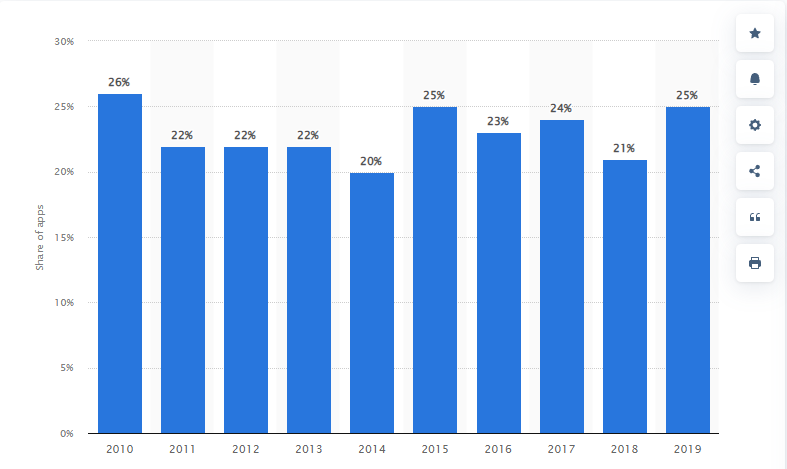Your product or service lives and dies by your brand. So how can you make sure your brand is remembered and leaves a good impression? It all starts with user experience. In this article we’ll look at how UX impacts your brand, a few tips and tricks, and look at Indicio’s approach.
By Tim Spring
It is typically said that you only get one chance at a first impression. Unfortunately, when it comes to new technologies, that often means it can’t just “work;” it also needs to look and feel enticing enough to the end user to get them to try it in the first place — and come back for more.
In the decentralized identity space, many companies are working on creating digital wallets to store digital identities using verifiable credentials that are held on the end user’s mobile device. Unfortunately, given the sheer number of options people have with apps on phones, it’s not a surprise that a recent survey found roughly 25% of apps are used only once after being downloaded.
Percentage of apps used only once by year

So how do we make sure that digital wallet apps don’t suffer this fate? Verifiable credentials have to be useful. The more useful they are, the more people can do with them in everyday life, the more they will be used. But that alone isn’t a guarantee of success. Digital wallets and verifiable credentials have to be easy to understand and easy to use. That’s obvious, right? But even that is not enough: They must be visually attractive. A 2009 study examined the effects of visual appeal and usability on user satisfaction found that user satisfaction was higher when using websites with high visual appeal and low usability than when using a site with low visual appeal but high usability. That first impression counts — but it’s often the last thing teams will think about when creating innovative technology. If you’re wondering how long that first impression lasts, according to research done by Google you have just 17 milliseconds to “hook” someone. The secret sauce to doing that is providing a combination of low complexity and high prototypicality (basically what the user expects to see — most users will have an assumption in their mind of what an ecommerce site or blog should look like and how they can interact with it).
When it comes to UI/UX, Indicio employs a simple, clean design. “We want someone to be able to pick up this technology and be able to use it without having to put a lot of thought into it,” says Indicio’s VP of Operations Scott Harris. While we have a step-by-step guide for our Holdr+ app (our version of a digital wallet) and other customer-facing products, we recognize that users are busy, or simply don’t want to read an exhaustive manual (only 25% of people read manuals for consumer products), the shortest learning curve is the path to success.
If you’re building a decentralized identity solution and would like to review your UI/UX or discuss best practices, Indicio is happy to help. You can get in contact with our team here. And if you are just looking for a plug-and-play solution we can easily adjust Holdr+ or Proven to fit your needs.
To learn more about Indicio’s approach to UI/UX you can watch a more in-depth interview with Scott on Identity Insights.






